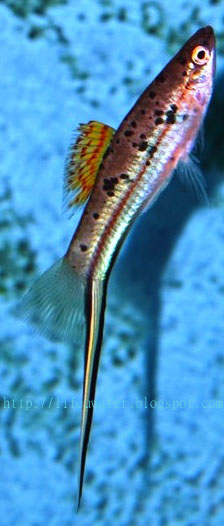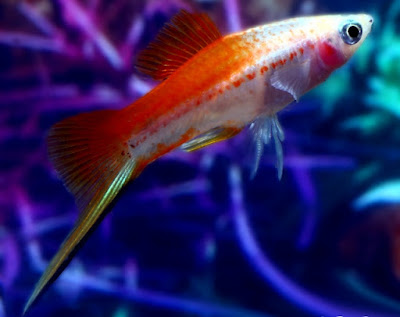Swordtails are hardy and colorful fish that make a wonderful addition
to the passive community aquarium. Swordtails are easy to breed, and new color
varieties are developed through selective breeding programs. Swordtails add
interest and color to the passive community aquarium, and make a perfect
addition for the novice to expert alike.
The Swordtail comes in many different colors with the males being
easily identified by their signature sword like tail. The Swordtail is an
extremely hardy fish that can adapt to a wide range of water conditions.
Appropriate Home: In an
aquarium with at least 15-gallons of water, an External Power Filter with a
BIO-Wheel, 1/4-inch or less of gravel, and an Aquarium Heater adjusted to
between 78 and 82 degrees F. Click here for more about warm water aquariums.
Like most livebearers Swordtails will do better with 1 Tablespoon of Aquarium
Salt per 5 gallons of water. Click here for more about Aquarium Salt.
Recommended Diet: Floating
flake food plus freeze dried blood worms, which are actually mosquito larvae.
Both of these foods are sold in most stores that sell pet fish. Click here for
more about feeding fish. I feed all livebearers a few Black Worms every other
day. Click here for more about Black Worms.
Compatibility: Like all
livebearers Swordtails live best in a group with a few male Swordtails and
several females. Swordtails are good tank mates for Mollies, Platies, Angels,
Corydoras Catfish, Plecostomus, and Bigger Tetras such as Black Skirts, Red
Serpaes, and Silver Tips. Click here to read more about several other groups of
compatible fish.





















